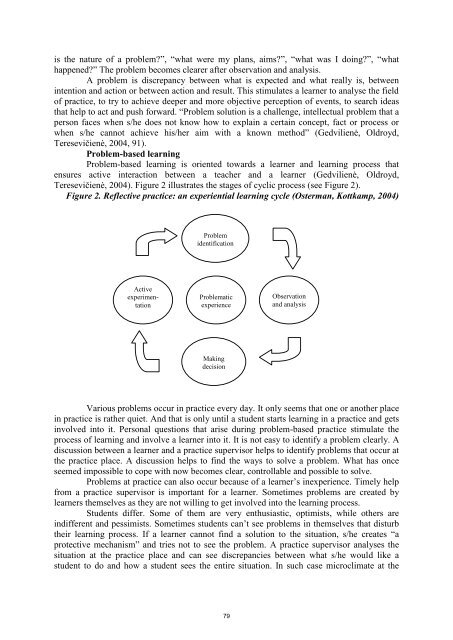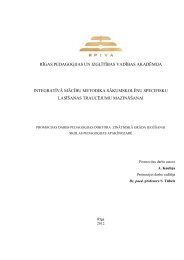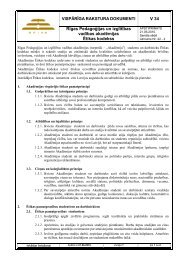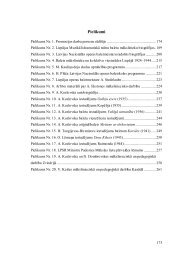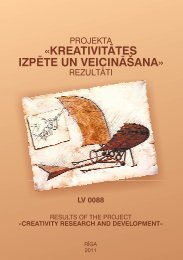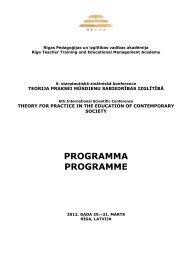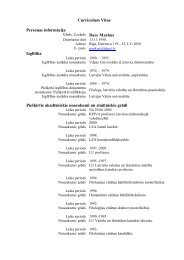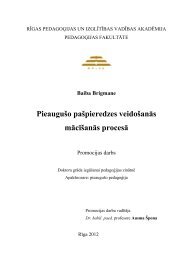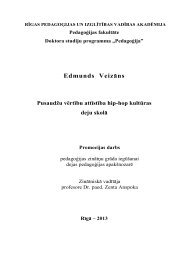saturs - rpiva
saturs - rpiva
saturs - rpiva
- No tags were found...
Create successful ePaper yourself
Turn your PDF publications into a flip-book with our unique Google optimized e-Paper software.
is the nature of a problem”, “what were my plans, aims”, “what was I doing”, “what<br />
happened” The problem becomes clearer after observation and analysis.<br />
A problem is discrepancy between what is expected and what really is, between<br />
intention and action or between action and result. This stimulates a learner to analyse the field<br />
of practice, to try to achieve deeper and more objective perception of events, to search ideas<br />
that help to act and push forward. “Problem solution is a challenge, intellectual problem that a<br />
person faces when s/he does not know how to explain a certain concept, fact or process or<br />
when s/he cannot achieve his/her aim with a known method” (Gedvilienė, Oldroyd,<br />
Teresevičienė, 2004, 91).<br />
Problem-based learning<br />
Problem-based learning is oriented towards a learner and learning process that<br />
ensures active interaction between a teacher and a learner (Gedvilienė, Oldroyd,<br />
Teresevičienė, 2004). Figure 2 illustrates the stages of cyclic process (see Figure 2).<br />
Figure 2. Reflective practice: an experiential learning cycle (Osterman, Kottkamp, 2004)<br />
Problem<br />
identification<br />
Active<br />
experimentation<br />
Problematic<br />
experience<br />
Observation<br />
and analysis<br />
Making<br />
decision<br />
Various problems occur in practice every day. It only seems that one or another place<br />
in practice is rather quiet. And that is only until a student starts learning in a practice and gets<br />
involved into it. Personal questions that arise during problem-based practice stimulate the<br />
process of learning and involve a learner into it. It is not easy to identify a problem clearly. A<br />
discussion between a learner and a practice supervisor helps to identify problems that occur at<br />
the practice place. A discussion helps to find the ways to solve a problem. What has once<br />
seemed impossible to cope with now becomes clear, controllable and possible to solve.<br />
Problems at practice can also occur because of a learner’s inexperience. Timely help<br />
from a practice supervisor is important for a learner. Sometimes problems are created by<br />
learners themselves as they are not willing to get involved into the learning process.<br />
Students differ. Some of them are very enthusiastic, optimists, while others are<br />
indifferent and pessimists. Sometimes students can’t see problems in themselves that disturb<br />
their learning process. If a learner cannot find a solution to the situation, s/he creates “a<br />
protective mechanism” and tries not to see the problem. A practice supervisor analyses the<br />
situation at the practice place and can see discrepancies between what s/he would like a<br />
student to do and how a student sees the entire situation. In such case microclimate at the<br />
79


